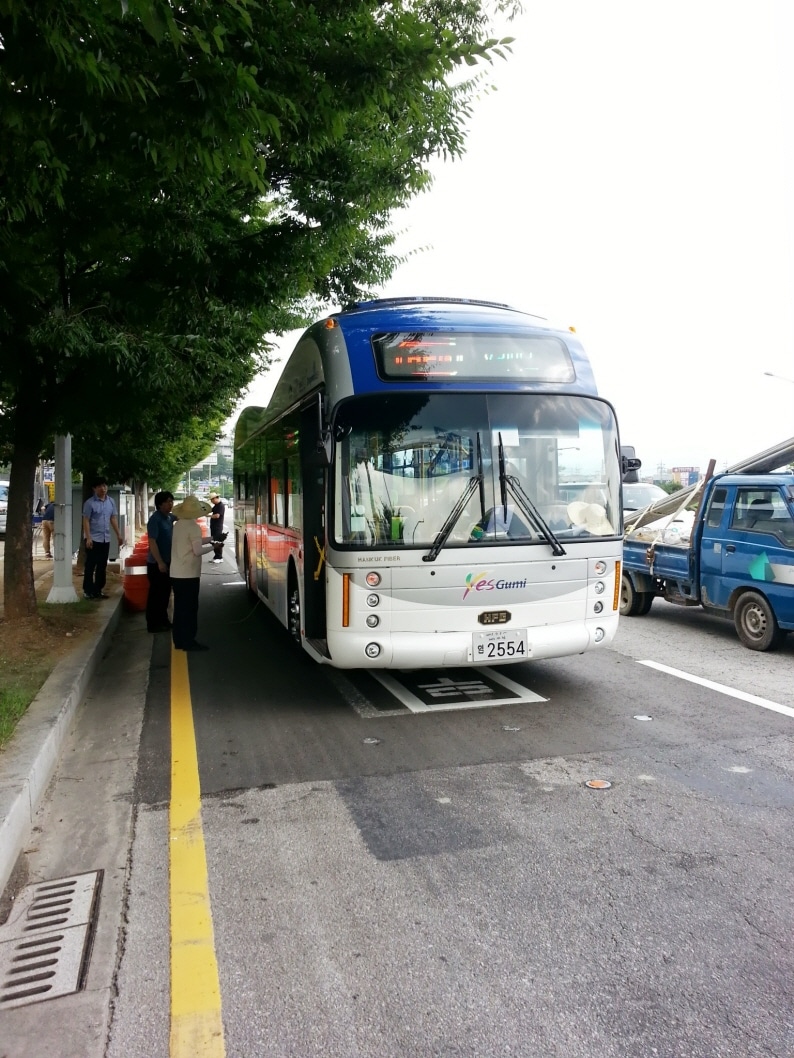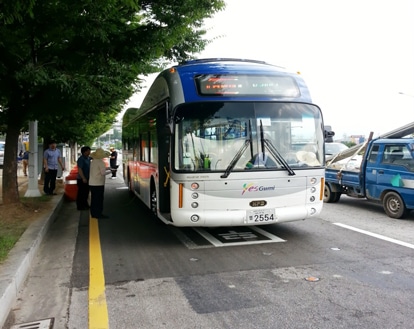
New electric buses with the ability to charge wirelessly while in motion introduced by the Korea Advanced Institute of Science and Technology (KAIST) could potentially boost commercialization efforts of electric vehicle technology.
Known as Online Electric Vehicles (OLEV), the electric buses draw power wirelessly through the application of KAIST’s “Shaped Magnetic Field in Resonance (SMFIR)” technology, which enables the vehicles to draw power from electrical cables buried under the road surface. A receiving device installed on the underbelly of the OLEV converts the magnetic fields generated by the cables into electricity to charge the battery and power the vehicle.
While already in use at an amusement park in Seoul and on the KAIST campus, the new technology will be implemented, beginning August 6, in two buses along an inner city route between Gumi Train Station and In-dong district in the city of Gumi, South Korea. According to KAIST, “the buses will receive 20 kHz and 100 kW (136 horsepower) electricity at an 85 percent maximum power transmission efficiency rate while maintaining a 17cm air gap between the underbody of the vehicle and the road surface.”
KAIST researchers say the efficient technology could have a major effect on current efforts to commercialize electric vehicle technology. While measuring almost three times the size of an electric car, the OLEV is powered by a single small battery measuring only one-third the size of a standard electric car battery. The vehicle complies with the international electromagnetic fields standards of 62.5 mG and is within the margin of safety levels necessary for human health. The installation requirements for the electrical cables needed to charge the vehicle is minimal—the cables are installed under only 5-15 percent of the road. The road is also equipped with a smart function capable of distinguishing OLEV buses from regular cars and turning on an off as needed, thereby preventing EMF exposure and standby power consumption.
However, despite the potential benefits the technology could bring to the transportation industry, some cost considerations remain.
“The technology is readily available, but the question is how to bring down the cost,” Park Jonh-Han, manager of the company the produced the OLEV prototypes, told AFP. Each bus costs around 700 million won, or approximately $630,000.
“Once the cost goes down, I believe more cities will be interested in commercializing the new transport network,” Park added.
If the operation proves successful by the end of the year, 10 more buses are scheduled to go into operation in Gumi by 2015.






